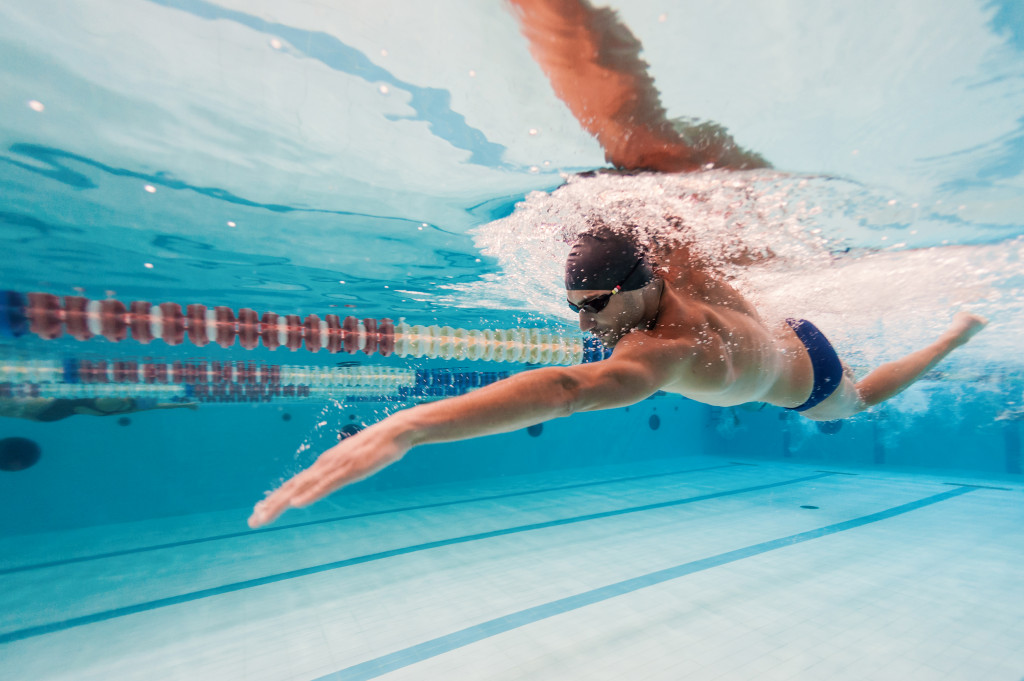Olympic swimmers are some of the fittest athletes on the planet. They combine strength, endurance, and masterful techniques in the pursuit of gold. Their training involves the proper mindset, calculated diets, hours of lapping in the pool, and a few strange esoteric practices. While the average person won’t be able to keep up with the harsh training of Olympic swimmers, one can apply some of their methodologies to their own fitness regimen.
Focus
Every swimmer aims for constant improvement — ultimately targeting a spot on the podium or the gold medal itself. A solid goal allows them to plow through the harshness of their training just to shave off milliseconds in their lap times. You can mirror the same focus by having a fitness goal and sticking to it. Most fitness routines are derailed by one or two lapses. Having a clear goal in mind should prevent these lapses or help you stay on track even after a few bad days. Broadcast your fitness goals or exercise regimen to friends, family, and coworkers. A little pressure can help you stick to your routine. At the same time, avoiding the disappointed and judging looks of the people around you can be great motivation. If you don’t have much faith in yourself, try joining a group. Team activities, such as CrossFit, cycling class, or regular sports, allow you to interact with like-minded people. Moreover, social camaraderie can be a great motivating factor.
Exercise
Swimming is a great exercise. It combines fast movement with resistance training. If you have access to a pool, try swimming 20 laps or more each session. Try going over 50 once you’ve learned the proper techniques. You can even join group pool exercises if you are new to swimming. Pool exercises minimize the chance of injuries, and water resistance adds a bit of strength training to the regular cardio workout. Outside of the pool, any type of exercise will do as long as you have constant progress. Run a few more yards, do a couple more reps, or add five pounds to the weights you lift. Keep a tally on your workouts and strive to surpass your own records every two weeks. Mix aerobic exercise with a bit of strength training to shed the pounds and keep them off. Aerobic exercises burn calories, but adding muscle increases your body’s metabolic rate. Try to schedule some form of physical activity in the mornings. Sunlight can burn off cholesterol in your body — transforming it into vitamin D, which helps boost your immunity and strengthens your bones.
Eat Properly

Most Olympians will have teams of dietitians customizing almost every meal. While it might not be feasible to hire a dietitian to go through every one of your meals, you can just cut your portions while increasing your protein intake. Protein makes you feel more satiated, allowing you to stave off hunger pangs and avoid untimely snacking. Don’t forget to drink water. Often, dehydration manifests into feelings of hunger — so go for a drink of water before hitting the fridge.
Go In the Water
Michael Phelps consumed 8,000-10,000 calories per day during his run for his gold medals. Even swimming eight hours a day shouldn’t be enough to burn all those calories. However, being in the water changes things. Water dissipates body heat extremely fast, prompting the body to burn fat to maintain its core temperatures. The phenomenon is called thermogenesis, and it is likely why swimmers can eat 4,000 calories per meal and still not get fat. Regular cold showers won’t be enough. Opt for a long soak in the bathtub — preferably for a couple of hours. Use cold water if you can, but even water at room temperature will be enough to drain away your body heat.
Get Your Own Rings
Team USA sported a different set of rings when they took to the waters in the Olympics. Most of them had circular red marks on their body. Using suction cups as a form of physical therapy is growing in popularity among swimmers and gymnasts. Other athletes also use the practice, but their uniforms conceal the red marks. Several studies have proven the efficacy of cupping in pain relief, sports injury therapy, and prevention, as well as removing toxins, such as aluminum, cadmium, and zinc from the body. Done properly, cupping is very safe. However, bruising and red marks are unavoidable.
Not everyone can be an Olympic swimmer. However, anyone can choose to be fit. Start your fitness journey by taking a page out of the playbook of the most successful swim team in Olympic history and using it as a guide to align your fitness routine and goals.




